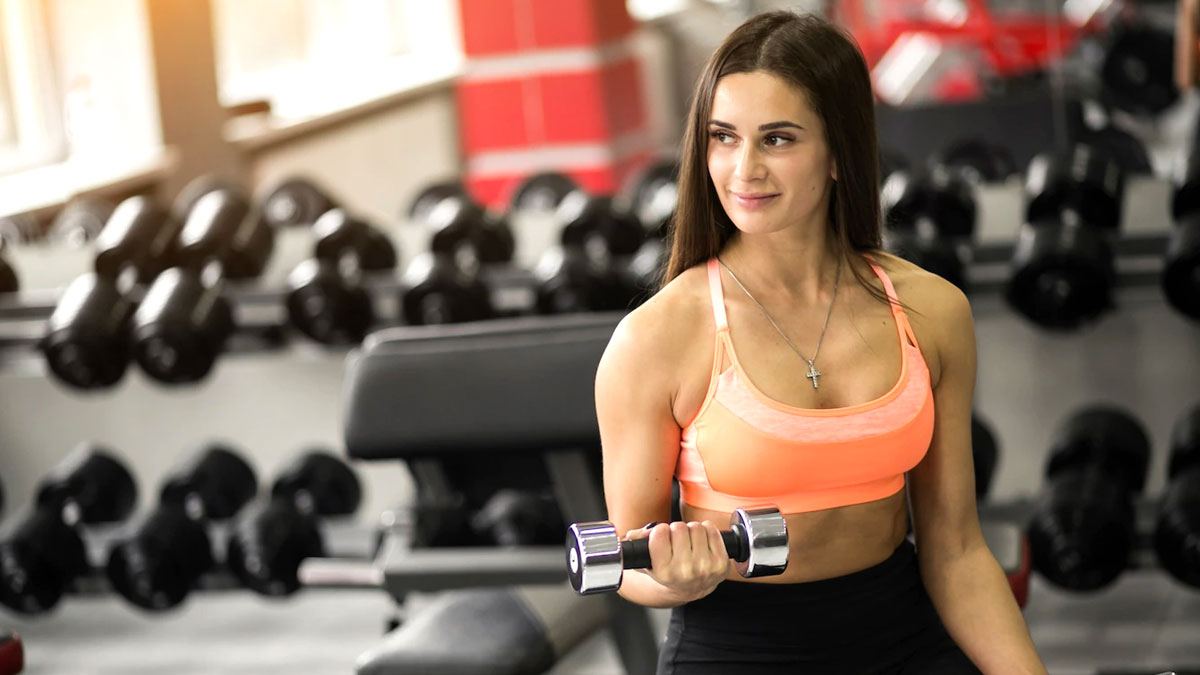Women and weights? Women and weights? Women and weights? You may be wondering that this is a typo and someone accidentally pasted a CHAT GPT generated piece of content without proof reading it. Its not… and women have heard this more times than thrice. After the exasperated “WHAT”? Comes the “Why, when, where, how”… And the motivation to be a weightlifter disappears from a woman’s mind. Just like every other second guessed decision that leaves a woman’s mind, this one also gets buried under the question. “But do you really need to do it?”
Well, let me tell you a story about a woman who was called “fat” at the age of 14, because she was 58 kgs heavy. She started lifting at the age of 18 out of the fear of gaining weight as if it had become an obsession. She chose to workout in the slot when most of the members were male because it was easier being cat-called than responding to things like,“You won’t look feminine anymore”, “It will have an adverse effect on your fertility”, “No one will marry you”.
You may have guessed by now that that girl is me… I am her. I preferred male counterparts in the gym, who in fact after the initial feather-rustling, became good friends. I got amazing advice on how to correct my form, what belts to wear, how to improve mobility, what protein to drink and so on… And one day, I got busted. My mom was of course super proud of me and supported me 100% but the women in the gym, meh…
Thats how my first stint with weightlifting ended. And I had to find another gym where women were okay with me being obsessed with weight lifting. I’m sure this story seems familiar. Women are okay to put themselves through grueling 90 minute ZUMBA sessions, through innumerable dance classes, inviting at least 3 different nutritionists to tell them what is wrong with their bodies, but will not lift weights.
At BinShakkar, we’re here to change mindsets and revolutionize the way people look at fitness. Whether its weightlifting or running or just an evening stroll. Movement is vital.
Here are 5 reasons why women MUST lift weights (with research sources and speaking from personal experience as well)
- Weightlifting has been shown to promote muscle hypertrophy and strength gains. A study published in the Journal of Strength and Conditioning Research found that resistance training significantly increased muscle strength in women (Westcott et al., 2009). Strength keeps daily pains at bay.
- Increased metabolism: Muscle tissue is more metabolically active than fat tissue, meaning that the more muscle you have, the more calories your body burns at rest. Research published in the European Journal of Applied Physiology showed that resistance training can lead to an increase in resting metabolic rate (Pratley et al., 1994). A higher resting metabolic rate means you are burning calories just being seated in one place! Is this reason enough?
- Weightlifting is a weight-bearing exercise that puts stress on the bones, promoting bone mineral density and reducing the risk of osteoporosis. A study published in the Journal of Aging and Physical Activity found that resistance training positively impacted bone density in postmenopausal women (Karinkanta et al., 2010). Post menopausal women start to lose 10% of bone density in the first 5 years of menopause. Still think that weightlifting impacts fertility negatively?
- Stress relief and mental well-being: Exercise, including weightlifting, can release endorphins and reduce stress. A meta-analysis published in JAMA Psychiatry concluded that resistance training was associated with a significant reduction in depressive symptoms (Gordon et al., 2018). There’s something amazing about being able to lift your own body weight and more and flaunt those gains!
- Learning weightlifting techniques empowers women to take control of their fitness journey. Through proper training and guidance, women can become more confident and self-reliant in their exercise routine. Not to mention that regular exercise, including weightlifting, is associated with numerous health benefits, including a reduced risk of chronic diseases like cardiovascular disease and type 2 diabetes (Warburton et al., 2006).
Motivated to start ? Here’s how you can begin.
- It’s essential to start with proper instruction
- Gradually progress to avoid injury.
- Always consult with a qualified fitness professional or healthcare provider before starting a new exercise program, especially if you have any pre-existing medical conditions.
- Invest in good (inside gym) shoes for the right grip as you start
- Of course, your best friend, a well fitting sports shape wear to support your upper spine as you start.
Happy lifting!

Ms Janhavi Saraf
